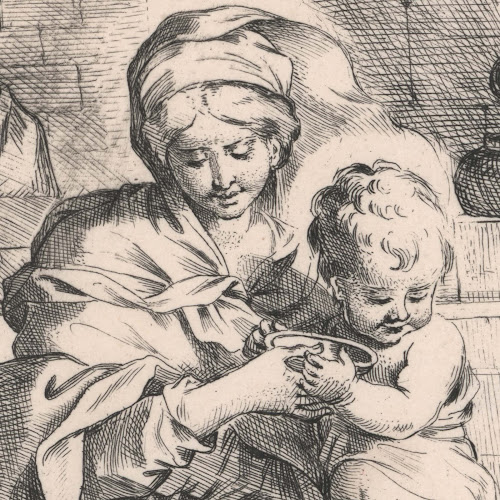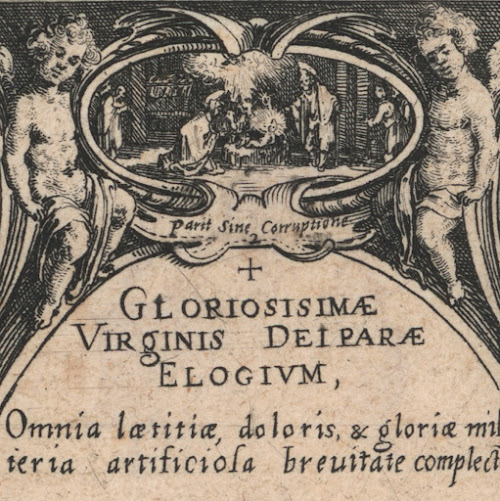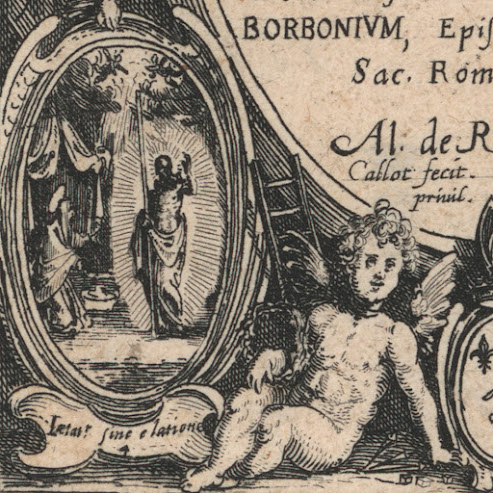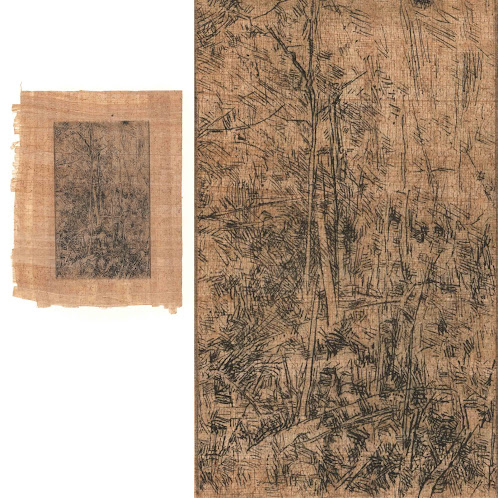Jan Saenredam
(c1565–1607)
“Diana
discovers Callisto's pregnancy” (aka “Diana ontdekt de zwangerschap van
Callisto” [Rijksmuseum title]); “Diana Ordering Her Nymphs to Strip Callisto
Who Tries in Vain to Hide Her Pregnancy” [TIB title]; “Dine ordonnant à ses
nymphes de dépouiller Calisto” [Bartsch title]), 1599, after the design of Hendrik
Goltzius (aka Hendrick Goltzius)
(1558–1617), with Imperial Privilege from Rudolf II van Habsburg (1552–1612)
and two lines of Latin lettered below the image by Cornelis Schonaeus (1541–1611).
This is a first state, lifetime impression before the addition of the publication
details for Hendrick Hondius I (1573–1650) (state ii) and the details
for Claes Jansz. Visscher II (1587–1652) (state iii).
Engraving
on laid paper trimmed close to the image borderline on the top and sides and
with the writing edge below, backed with a support sheet.
Size:
(sheet) 21.7 x 30.3 cm; (image borderline) 20.1 x 30 cm.
Inscribed
in plate within the image borderline: (lower left) “HGoltzius Inuent./ I.
Saenredam Sculp.”; (centre) “Cum privil. Sa. Cæ. M./ 1599.”
Lettered
in plate below the image borderline: (left of centre) “Dum detrectanti .../ …
crimen.”; (right of centre) “Cornelius Schoneus.”
State
i (of iii)
TIB
4.52 (Walter L. Strauss [ed.] 1980, “The Illustrated Bartsch: Netherlandish
Artists: Matham; Saenredam; Muller”, vol., 4, New York, Abaris Books, p. 368,
cat. no. 52); Hollstein Dutch 77-1(3) (George Shepard Keyes [comp.] 1980, “The
New Hollstein: German Engravings, Etchings and Woodcuts c1450–1700: Jan
Saenredam to Roelandt Savery”, vol., 23, Amsterdam, Van Gendt & Co, p. 60,
cat. no. 77).
The
Rijksmuseum offers the following description of this print: (transl.) “The
naked Diana with her nymphs in the wilderness. Diana points accusingly at
Callisto, whose clothes are pulled aside by the nymphs to reveal her pregnancy.
The print has a Latin caption” (http://hdl.handle.net/10934/RM0001.COLLECT.169282).
Condition:
a well-printed lifetime impression in an excellent condition with no tears,
holes, folds, abrasions, significant stains or foxing and laid onto a support
of archival (millennium quality) washi paper providing wide margins.
I
am selling this superb lifetime (first state) impression of what I see as a masterwork
of engraving executed in 1599, for the total cost of AU$689 (currently US$459.82/EUR421.34/GBP370.14
at the time of this listing) including postage and handling to anywhere in the
world, but not (of course) any import duties/taxes imposed by some countries.
If
you are interested in purchasing spectacularly fine engraving, please contact
me (oz_jim@printsandprinciples.com) and I will send you a PayPal invoice to
make the payment easy.
This print has been sold

























































